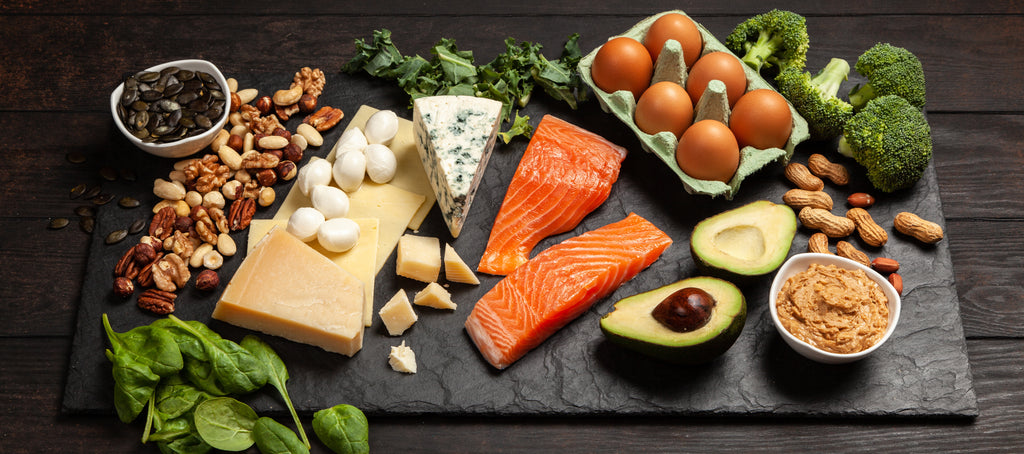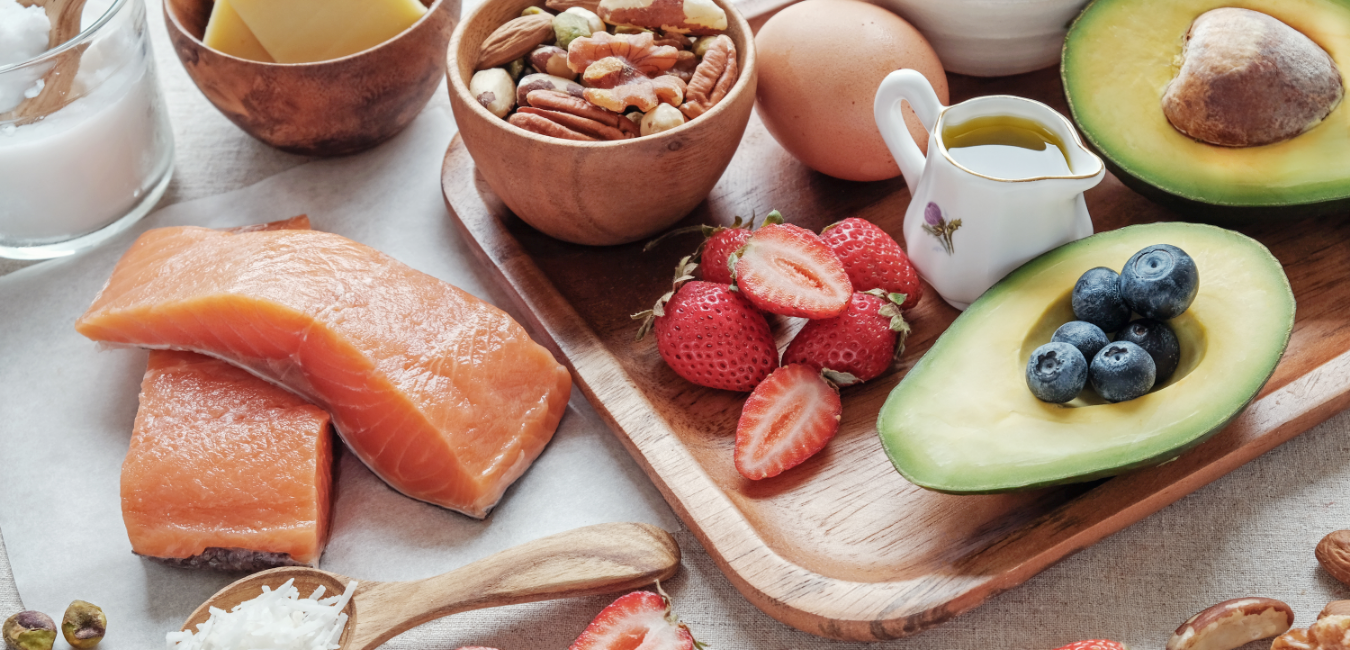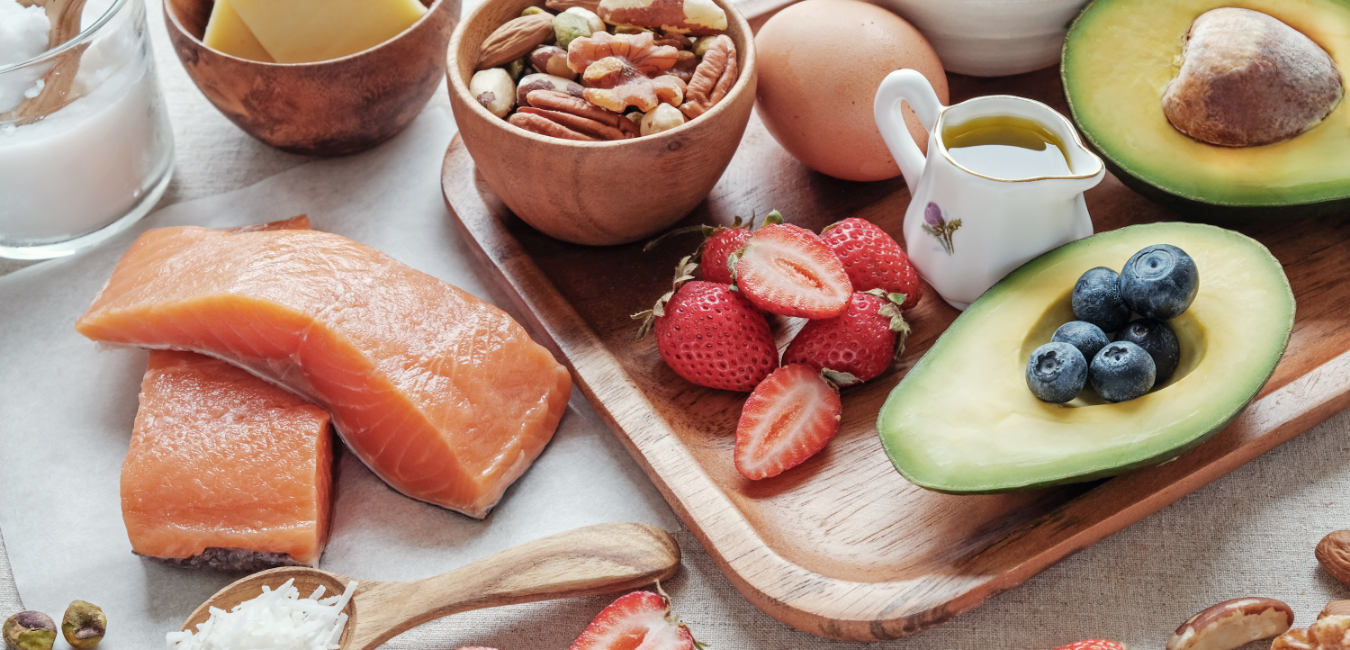26th May , 2020

If you’re looking to start your low carb or keto diet, you're in the right place.
Changing the way you eat is a journey
A huge part of this process is unraveling decades of eating patterns and habits.
Words and labels are powerful. They carry meaningful associations that impact how we feel. I know we talk about the keto diet or low carb diet but it’s so much more than that. It’s a way of eating. How much better does low carb way of eating or keto way of eating sound?
Our thoughts affect our feelings which impact our actions.
If we want to act a certain way, we need to think a certain way. By modifying how we label something, for example, from diet to way of eating, we readjust our relationship to food away from the negative undertones that surround the word ‘diet.’ As we begin to retrain our brains and relationships to food, the language we use is just as important as the changes we make to our grocery shopping lists.
Our Personal Keto Diet Journey
Our journey was driven by a medical necessity. We rushed into a low carb diet over a frenzied, stressful 10 days. Five weeks before, our world was turned upside down. Our three year old daughter was diagnosed with Type 1 diabetes. After extensive research, we discovered a low carb diet could help with maintaining stable blood sugar levels.
After a month, we realised so many positive and unexpected benefits: we had more energy, we felt calmer, sharper at work and we lost weight. We weren’t trying to accomplish any of this. We switched to a low carb diet purely to support the health of our child, no other reason.
Find the Keto Macro Ratios Confusing?
Well, this may come as a surprise, we never looked closely at the macros between fat, protein and carbs. We still don’t do this. You can have incredible results with this way of eating without counting macros. We kept our focus on limiting our diet to 20 net carbs per day.
Three primary changes to implement low carb:
- Immediately, we eliminated grains and sugars.
- A couple months later, we removed legumes.
- After a year, we removed polyunsaturated seed oils due to their toxicity.
We were never big milk drinkers so this wasn’t an issue, we did start buying full fat cream or Unsweetened Almond / Coconut Milk.
We’ve been eating this way for 3.5 years. Initially, we followed a low carb diet. After a year, we focused our diet around keto diet. It takes time and took us about a year to really get it right.
We’ve stuck to a low carb, keto way of eating because we kept it simple. It also helps to stick to a low carb diet when you see how much insulin a diabetic requires to cover say, a couple bites of a banana or a single strawberry, let alone processed carbs like rice, bread or pasta.
Initially, we did NOT intermittent fast and weren’t trying to be in a ketogenic state, this came a lot later (like a year after following a low carb diet).
You can achieve super impressive results by focusing your diet around a low carb diet and limiting your carbs to 20 net grams per day.
Grocery shop for a keto diet or low carb diet
Just remember - keep net carbs under 20 grams per day
1) Walk the edges of the supermarket to buy vegetables, meat, eggs, cheeses and cream. Stay away from the aisles, they’re way too tempting.
2) Walk into the aisles only for these: nuts, nut flours, nut spreads, seeds, stevia or monk fruit erythritol based sweeteners, olive oil, cocoa powder, sugar free chocolate or at least 90% dark chocolate & coconut aminos, herbs/spices.
3) Buy only vegetables that grow above ground. Don’t buy vegetables that grow below ground like potatoes.
4) Skip the fruit apart from blackberries, raspberries, blueberries, lemons, limes (& those in moderation)
5) Ditch the milk for cream, unsweetened almond or unsweetened coconut milk
6) Don’t even look at the pasta, rice, bread, legumes. If you can find konjac or kelp noodles, these are brilliant pasta substitutes, wash first to remove the fishy odour.
7) Double down on the cartons of eggs you buy, you’ll be eating lots of eggs. Triple your usual order if you plan to bake with them.
8) As you select meats, buy meat with no sauces. Be wary of net carb amounts with sausages. Fatty meat is great to buy. If you prefer lean meat, just buy that, you’ll still see results provided you keep your net carbs down. Perhaps, over time, you’ll choose to eat fattier cuts of meat, they’re delicious and make you feel more full so you end up eating less.
9) Read your labels, if it seems to good to be true, it probably is. Stay away from anything sweetened with maltitol, coconut sugar, dates, artificial sweeteners.
A Note on Net Carbohydrate Amount on Nutritional Labels
In New Zealand & Australia, the net carbohydrate amount can be found in the nutritional information panel. Some companies choose to do this which can be confusing. As low carb and keto diets are gaining in popularity, there does seem to be a trend with more companies listing the net carb amount.
In the United States, the total carbohydrate is listed in the nutritional information. Subtract the fibre from total carbohydrates to find the net carbohydrate amount.
Net carbs = Total carbs - Fibre
Artificial Sweeteners & Maltitol?
I can’t emphasise this enough, maltitol impacts sugar levels in almost the exact same way that sugar does. It causes an insulin response. So many products labelled with ‘sugar free’ or ‘low carb’ in our supermarket contain maltitol. I know, reading ingredient labels can be a pain. It won’t take you long before you sort which products to stay away from.
Stay away from artificial sweeteners like aspartame.
I’ve written heaps more about low carb and keto sweeteners here.
So what sweeteners does that leave on a Keto Diet?
The more common ones are erythritol, monk fruit sweetener, inulin, allulose, chicory root fibre, stevia. Xylitol is considered a keto or low carb sweetener. We’re not huge xylitol fans because it still spikes sugar levels and is deadly to dogs.
At New Zealand supermarkets, it’s really easy to buy stevia/erythritol blends. It’s usually in the baking aisle. Our favourites are the monk fruit/erythritol blends.
Access to Low Carb & Keto Information in the Digital Age
If you’re able to engage with a coach, nutritionist, or dietitian to create a low carb or keto diet plan, that’s awesome. If you’re not able to engage with a professional to help you on your low carb or keto journey, there are heaps of free resources out there – library books, websites and podcasts. Also, so many delicious low carb, keto recipes are free online.
Keto and low carb Facebook groups are incredible communities. They’re great resources for recipe ideas, advice and inspiration. The dramatic before keto diet & after keto diet photos are one of my favourites.
For Diabetics Looking to Start a Low Carb Diet or Keto Diet
You need more detail than this simple guide to starting a low carb diet.
Richard Bernstein’s book, The Diabetes Solution, is a fantastic resource. It’s detailed, thorough and the only low carb book we needed. It also has really important information like how to transition to a low carb diet for those who are insulin dependent and insulin bolusing for your meals.
There’s also a wealth of free information on YouTube by the same author called Diabetes University. Here’s a link to a video where Dr Bernstein describes his journey with low carb: https://www.youtube.com/watch?v=WFNGdKSXx64
Finally, we’ve had really positive experiences with Low Carb Diabetic Facebook groups. We’ve found them to be really supportive and knowledgeable.
Looking for more info on Skyebird Foods keto products
Find out more about the ingredients we use in our keto bread and other keto products here
Find out how our keto bread was designed with seed flours & their health benefits here
Check out how a couple slices of keto bread toast compares to a bowl of muesli here
You can purchase our keto bread here
How'd our family get into all of this? Find out here
Other Articles

09th Nov , 2020
Benefits of Keto
Thinking of starting keto? Then you’ve come to the right place! A ketogenic diet is a low-carb, high-fat and moderate-protein diet that alters the body’s metabolism to use fat as the preferred fuel, rather than sugars.

What is Keto?
A ketogenic diet is very low in carbohydrates and moderate in protein, meaning a high percentage of total energy (kilojoule) intake comes from fat rather than carbs.


